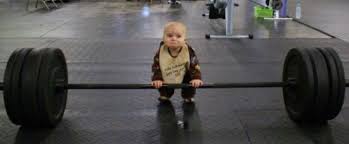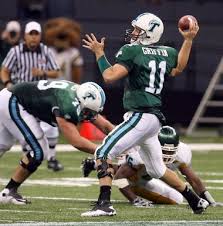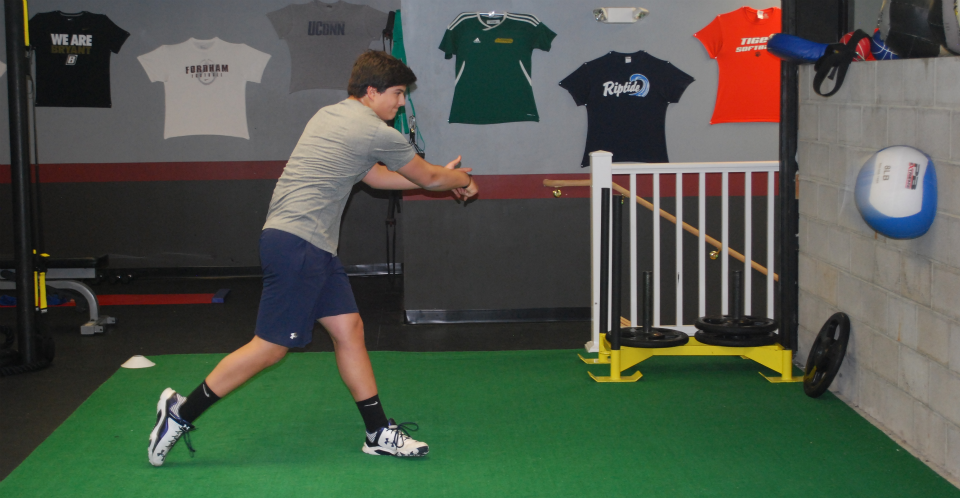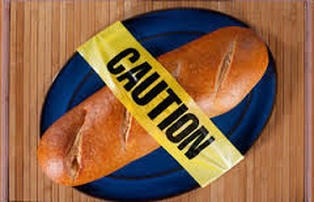|
Everyone loves doing what they are good at, whether it be push ups, squats, deadlifts or any other movement. But ask yourself, how much better are you making yourself if you always focus on your strengths. If you have a great looking squat and your deadlift is lagging behind try taking a few weeks or months to focus on bring your deadlift up to par. I’m not saying don’t squat, but make the focus getting good at deadlifts. Ask yourself what it is about the deadlift that you struggle with. Is it the lift off, lock out or something else? Make a program focused on bring up your weakest link. As it pertains to the deadlift let’s say that you struggle with your lock out. You might want to start with adding in more heavy rack pulls higher up on the thigh. What if you are a bit slow off the floor? Maybe you need to throw in some speed work with lighter weight. Is your upper back strong enough to lift big weighs? If not, throwing in some more rows and chins into your program will help. At the same time there should always be balance in your training program. An example of this would be those that love to bench press (you know who you are!), but maybe sneak in a pulling exercise once or twice a month. This will lead to weaknesses and imbalances creeping in. The last thing you want is to be injured from a training program that is unbalanced and poorly written. For our athletes out there this is also extremely important. During the season, depending on your sport, attention should be paid to what imbalances and weaknesses usually show themselves during your season. If you are a quarterback your plant foot and throwing arm will be getting more work during practice and games. This could lead to overuse injuries if not cared for during the season. An in season training program needs to focus on preventing the opposite limbs from lagging behind and also making sure overuse injuries do not present themselves in the more active limbs.
Make sure you are working with your performance coaches to have the best chance at avoiding injuries. It is up to you to make sure your weakest links are brought up to par, if not you will always be held back from your true potential and possibly on the side lines with an injury.
1 Comment
The split stance perpendicular medicine ball scoop is one of my favorite medicine ball (MB) exercises for developing sport specific power. It is a great movement because it relates so well to most sports and is very specific to how athletes produce power during competition. Coaching Cues
· Assume a split stance with the back heel off the ground. · Begin by slightly dropping the front knee towards and ground. · As the knee is dropping start rotating your thoracic spine (upper back). · Keep your eyes on the medicine ball the whole time. · After the slight knee drop and thoracic spine rotation explode up by driving through the front heel and forcefully extending the hips. · Scoop the medicine ball into the wall and be ready to catch it on the bounce back. Picture a hockey player skating up ice, a baseball player stealing 2nd base, a basketball player dribbling by an opponent, it is going to look very similar to this specific MB exercise. Each player will load their posterior chain by making a slight dip and then explode out of that stance. Any athlete that moves their feet into a split stance can use this exercise to develop sport specific power. Try doing 3 sets of 6-8 repetitions per side to develop sport specific power. Power is a quality that every great athlete needs to possess in order to excel at their sport. It is the final touches that propel good athletes into great ones. Without a doubt, this is an area that an advanced athlete needs to pay great detail and attention to. The questions that have to be asked are how and where does this power need to be applied. Does it involve rotational or linear movement? Those will be the questions that I look to answer for sport specific power development. first things first, the greatest amount of power that can be produced is transferred through the ground up through the lower body. When an athlete exhibits a tremendous amount of power, whether throwing, kicking, hitting, tackling or any other form, that power is produced by applying explosive force through the ground. Power and force are inversely related but are still components of one another. Bottom Line: Develop strong explosive wheels to produce tremendous amounts of power. What you need to produce the power against will usually dictate what direction you need to train power. If you are tackling an opponent you will most likely train power in the sagittal plane or perform a linear movement. If you are moving an object such as swinging a racket or throwing a football you will be training power in the transverse plane which is a rotational movement. Bottom Line: Power development should be sport specific for the advanced athlete. Ok, so we answered the how it needs to be produced and where it has to be applied. How about what should we do to train those sport specific power movements. Training power in the sagittal plane could involve movements such as box jumps, power cleans and snatches. These movements are all preformed in the sagittal plane and would be great exercises for a hitter (volleyball), power forward (basketball) or offensive guard (football). Athletes that need to train power in the transverse plane would use a variety of medicine ball rotational throws, scoops and slams. These would be great for our pitcher (baseball), quarterback (football) or golfer (golf).
Bottom Line: Power exercises should be selected based on the sport and position you play. Remember this topic is about advanced athletes. There is nothing wrong with a twelve year old quarterback working on rotational power, but let’s not get carried about getting to sport specific at a young training age. Let the athletes develop and learn, then master the basics. As for our advanced athletes sport specific training is key to their success. So gluten, that spiral shaped protein found in wheat, has been demonized by many experts in the field of nutrition and everyone else that thinks they know anything about nutrition. Is there a middle ground or is gluten the devil in disguise? Yes there is kind of a middle ground, like most cases, it is not so black and white. Wheat in itself might be harmless, it at least supposedly use to be. Throw in a little genetic alteration, chemically laced crops and everyone having a gluten allergy and all of a sudden consuming wheat is a death sentence. Everyone put down their pasta immediately or a cruel death is sure to follow! On the other hand there are many out there that still say having a diet full of whole grains such as wheat is crucial for good health. There are carbohydrates for energy, fiber for digestion, vitamins, and minerals and there is even protein! So what are you to do with all these conflicting arguments? There are many things to discuss concerning this topic. The gluten free craze is a nice place to start. Gluten free products are either products that would not have gluten in them in the first place for the most part or the gluten is replaced with something that just as unhealthy for you such as tapioca starch or the like. Yes there is an extremely small percentage of the population that has celiac disease, which is quite serious and would need to have a substitute for gluten, but they should probably just avoid gluten free products all together. Take away point being that gluten free does not equal healthy!
So what about the people that do not have celiac disease or any other gluten allergy issue. Should they eat wheat? There are a few ways wheat can have a negative impact on our health, one being over consumption of wheat. Most of us have a very large amount of wheat in our diet from cereal for breakfast, a sandwich for lunch and pizza for dinner which leads to an increase in the caloric storage hormone insulin. With decreased activity in many Americans this is a huge problem. There is also that concern you might have heard about over GMOs (genetically modified organisms). It seems that every other government allows their citizens to know what is in their food, but ours. From the GMO debate, to the chemically laced wheat, we are eating wheat that might cause you to raise an eyebrow. Are these GMOs and chemicals what are actually causing the harm? That would be my guess, but research is yet to have a definitive answer. Take away point being that the wheat you are eating might be a GMO and it is probably laced in chemicals. I’m guessing that is no good for your health. So do I eat wheat? Yes, on occasion I do. I would prefer it to be GMO free and organic if I am going to indulge at my favorite pizza shop or bakery. For those that cannot tolerant wheat you can get the same nutrients found in wheat in other foods. You do not need to eat wheat to live, contradictory to what you might have heard. Bottom line, if your body handles wheat find keep it to a minimum and make sure it is GMO free and organic. If it turns your body upside down, avoid it and avoid all the gluten free garbage out there. The debate surrounding wheat is not likely to go away anytime soon with supporters on both side of the debate drawing a hard line in the sand. |
Archives
July 2024
Categories
All
|
Proudly powered by Weebly






 RSS Feed
RSS Feed